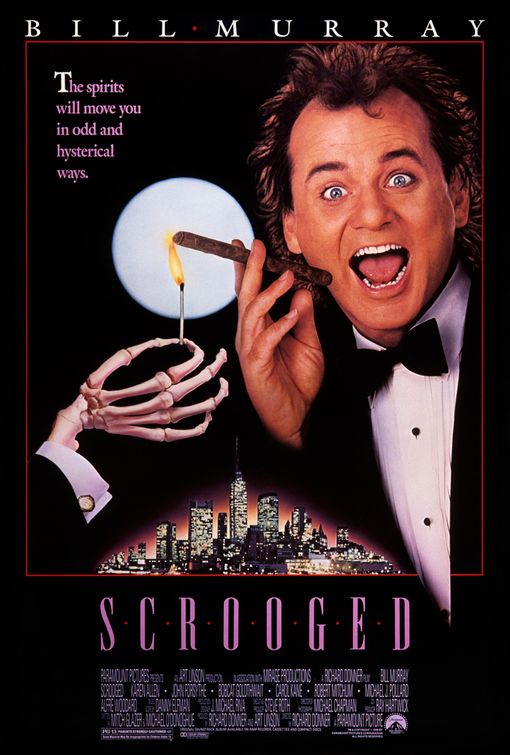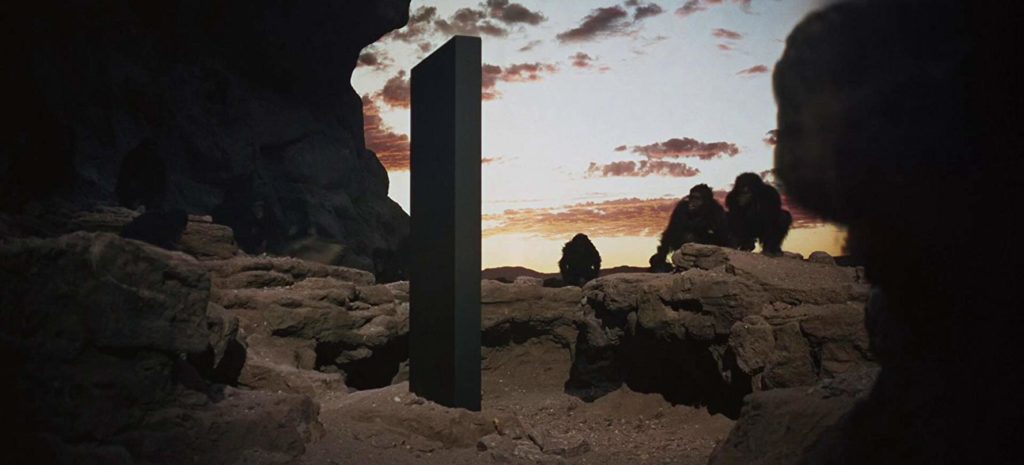Film Log #4 – 1.2020
Thursday, January 9th, 2020In an effort to curtail my cycle of binge watching (and re-watching) programs available on streaming services, I’ve made a more concerted effort to support the local video store – Vulcan Video. Their mid-week 2-for-1 deal keeps me returning fairly regularly.
With that in mind, I figure I’d log a somewhat quick rundown of the films I’ve recently experienced (because, you know, there aren’t already enough people recreationally writing about movies).

Let’s take a moment to talk about Film Noir.
One of my earliest introductions to this movement or genre (there’s an academic debate whether or not FN constitutes its own genre or just a movement that has come and gone with the exception of the occasional spoof or neo-noir) was through Bill Watterson’s Calvin and Hobbes. Tracer Bullet, my favorite of Calvin’s alter-egos, is a hard-boiled detective and spoof of what we usually find in FN.

I enjoyed the imagining of this kid governed by so many arbiters of personal behavior as something he so totally isn’t: a Man who plays by his own rules.
The tough talk and dark visuals certainly appealed to me. I, much like Calvin it seems, thought that’s what was waiting for me in adulthood- a life where people lived with much on the line. Where decisions are crucial and consequences weigh heavy.
Onto actual Film Noir. The characters are usually people who live outside of the accepted norms. Sometimes those characters placed or threw themselves into the margins of society, and other times, society pushed them there: career criminals, hoods, street toughs, private investigators, crooked cops, desperate men who had lived on the “straight and narrow” until tragic circumstances placed them ethically between a rock and a hard place.
For the most part, these films live within the gray areas of life.
And it makes perfect sense that the art of this era had no choice but to accept tough realities. Technological advancements came at a much faster pace than societal advancements. The Second Industrial Revolution gave way to a depression sandwiched between two world wars. Much like how the printing press opened a new era in discourse and sharing of ideas, advancements in radio, television, and other forms of broadcasting ideas began to shrink the globe and provide people with new perspectives.
Through a variety of factors including war-time efforts and contributions, women and persons of color had made meaningful steps towards equal rights, yet there were obviously many more battles ahead that continue today in regards to equity and opportunities.
The main point is that the world was moving fast and what many folks used to believe was the correct and virtuous way to live one’s life was morphing. Values were changing.
WWII had ended. Europe was in physical and economic repair. The Allies won, but what the war had shown to many people is that not only is war ugly, but humanity is plain ugly.
Enter the filmmakers of this era. They wanted to depict lives caught in double-crosses, ironclad loves whose fate was to eventually break, and dirty business dealings concluding violently. It’s an era of outstanding photography, characters, subject matter, and intrigue.
I’ve always made an effort to live in a city that provides opportunities for cinephiles. Austin, Texas certainly isn’t an exception. Austin Film Society, as well as the Paramount Summer Film Series, and of course the many Alamo Drafthouses provide many opportunities to experience cinema that I’m very thankful for.

Austin Film Society screened The Asphalt Jungle a handful of times in December. Directed by the much heralded John Huston, it stars Sterling Hayden (who I had only previously seen as Brigadier General Jack D. Ripper in Dr. Strangelove and as Captain McCluskey in The Godfather) as Dix Handley, a strong arm for hire. He’s crewed up with a driver, a safecracker, and an older man who has masterminded a jewel heist.
The only problem comes in the financing and fencing of the stolen goods. Enter Marilyn Monroe, in one of her earliest performances, as Angela Phinlay – the financier’s gal on the side.

I’m embarrassed to admit that I haven’t seen too many of Monroe’s pictures. After seeing The Asphalt Jungle though, I’m going to have to correct that. You’ve heard it all before, the magnetism, the effortlessness (or perceived effortlessness) and it’s totally true. She makes everyone involved in the scene melt and, in the audience, we do the same.
James Whitmore, who worked like crazy from 1949-2007, is easily identified as Brooks Hatlen (the librarian who ended up becoming “institutionalized” as Red phrased it) in The Shawshank Redemption, plays a getaway driver who also runs a diner and seems to be the best adviser that Dix has.

The film world builds perfectly, introduces the characters and explains their motivations, then sets the stage in such a fluid and easy to consume manner. During the heist, a hard-to-believe and fluke occurrence transpires. My ability to sacrifice realism in order to allow myself to enjoy the film took a slight hit. Dix punches a nightwatchmen, knocks him out cold with one punch causing the security guard’s pistol to fall in such a way that induces the firearm to discharge and of course the bullet catches a member of Dix’s crew.

Now, this event essentially closes the second act of the film and it’s the very first time where the film has asked me to give it some leeway in its storytelling. My film companion had noted that when watching many other films, particularly contemporary films, they ask you to accept all of these impossible attributes, otherworldly circumstances, supernatural occurrences, and then also accept some ridiculously fortuitous events in order to propel the story.
I find it more comforting to having only been asked one slight oversight as opposed to what Martin Scorsese recently referred to as “theme park” cinema.
The Asphalt Jungle is worthwhile; would definitely recommend.
I will see it again soon enough.

Not one for getting overly hyped about Christmas, I told myself that I should at least try to see one holiday picture. I remember Scrooged being broadcast on Comedy Central in the late 90s. I caught portions of the airings back then and figured this would be 2019’s holiday film for me.
What a mistake. It’s simply a terrible film. Even with me trying as hard as I could to be in some kind of holiday spirit and enjoy whatever BS that was going to be screened, it was still a very dumb and poorly executed film. While experiencing how bad it was, I googled what Bill Murray had to say about it and it’s clear that there were many arguments during the production of this film.
As I have spoken about Anti-Heroes in the past, what makes them interesting are the complexities and contrasting motivations. Bill Murray’s character is about as flat and unfunny as any character I can imagine. The film attempts to save this unredeemable leading man with a half-cocked cry for help in the last five minutes of the film.
It’s cheap. It’s a waste of time. I don’t see how even the most crazed Bill Murray fans could enjoy it.

Public Speaking is a film by Martin Scorsese about noted writer/critic Fran Lebowitz. It was released in 2010 and I remember Fran Lebowitz describing the “suburbanization of New York” around that time. I obviously was interested in hearing more.
However, even as HBO GO became more prevalent and HBO has allowed the majority of their content to be streamed, this has yet to be offered online (to my knowledge) and I had to rent it from my favorite video store, Vulcan Video.
The film plays out like most biographical docs. Scorsese uses an excellent variety of clips showcasing writers/critics like James Baldwin and William F. Buckley while Lebowitz shares quips and insights about contemporary society.
Her points are interesting, some possibly controversial, but they’re certainly not boring or dumb. And after having watched Scrooged, I was happy to not see anything dumb.
I recommend it.
I’ll watch it again. Which is saying something because I generally don’t revisit docs all that often (American Movie probably being the only exception).

Terrance Malick certainly has his strengths: Photography, the use of natural light, and making a committed effort to showcasing earthly truths are his principle strengths.
Storytelling may not be. Whether that’s true or not, it seems like his scenes play out nearly scriptless. That’s fine. Many landmark moments in cinema have been unscripted, but hell, Malick seems to think that every actor is just as good at improvising as they are at acting.
If you’re not familiar with the story, August Diehl (who was outstanding as Major Hellstrom – the guy who calls out Fassbender for how he uses the wrong hand signal for the #3 in the tavern in Inglourious Basterds) stars as an Austrian farmer who is liked in his community, devout in his Catholic faith, and a very loving husband and father.
That all changes as Hitler assumes power. Diehl’s character, real-life Franz Jagerstatter, can’t swear an oath to Hitler and that’s the crux of the film. The film breaks this conflict down, the excruciating decision Jagerstatter had to make, in so many ways (and so many times!).
I heard a podcaster’s take on The Irishman as, paraphrasing here- we didn’t need six scenes of Pesci pulling De Niro aside and advising him to go calm down Hoffa (Pacino). Two or three would’ve done the job, but they just kept going back and forth with it and it was unnecessary.
Similarly, this film repeatedly presented the same dilemma over and over again and consequently, the film ran upwards of three hours… for a single conflict.
As always, Malick’s visuals are beautiful and there’s plenty of positives to take away from the film, but it can understandably leave one thinking, “why did we have to see the same damn scene over and over again?”
I’ll probably not see again though I did enjoy the film.
Take it or leave it.

I was caught in a strange circumstance where a friend invited me to an afternoon screening of A Hidden Life followed by another asking me to go to a 70mm screening of 2001: A Space Odyssey later that evening. I happily obliged both invitations.
One of my good friends and college roommate loved 2001 and his DVD copy stayed in my room for a good month or so and though I put it on a dozen times, I’m guilty of having never completed it in one viewing. In recent years, with all the opportunities this town screens 2001 on the big screen, I was committed to finally taking it down.
I was not disappointed. Plenty of people smarter than I have had a ton to say about this film. I’ll simply offer that seeing it on the big screen is obviously a worthwhile experience and Kubrick is basically too good to pass up.

I left the theater knowing that there was certainly going to be a ton of material available to answer the few questions I had.
This New Yorker article helped sort out some questions such as “How many Monoliths were there?” (three), as well as simply needing some clarification on the ending.

Anyhow, it was a spectacle and I’ll probably be seeing it again in the theater in a couple of years.
I recommend.